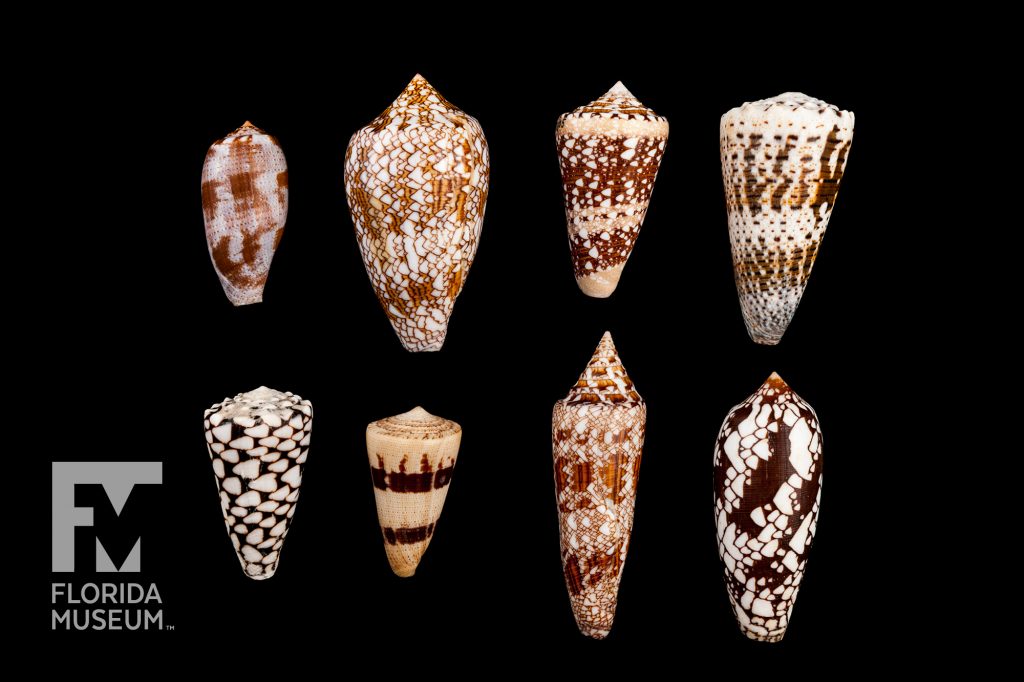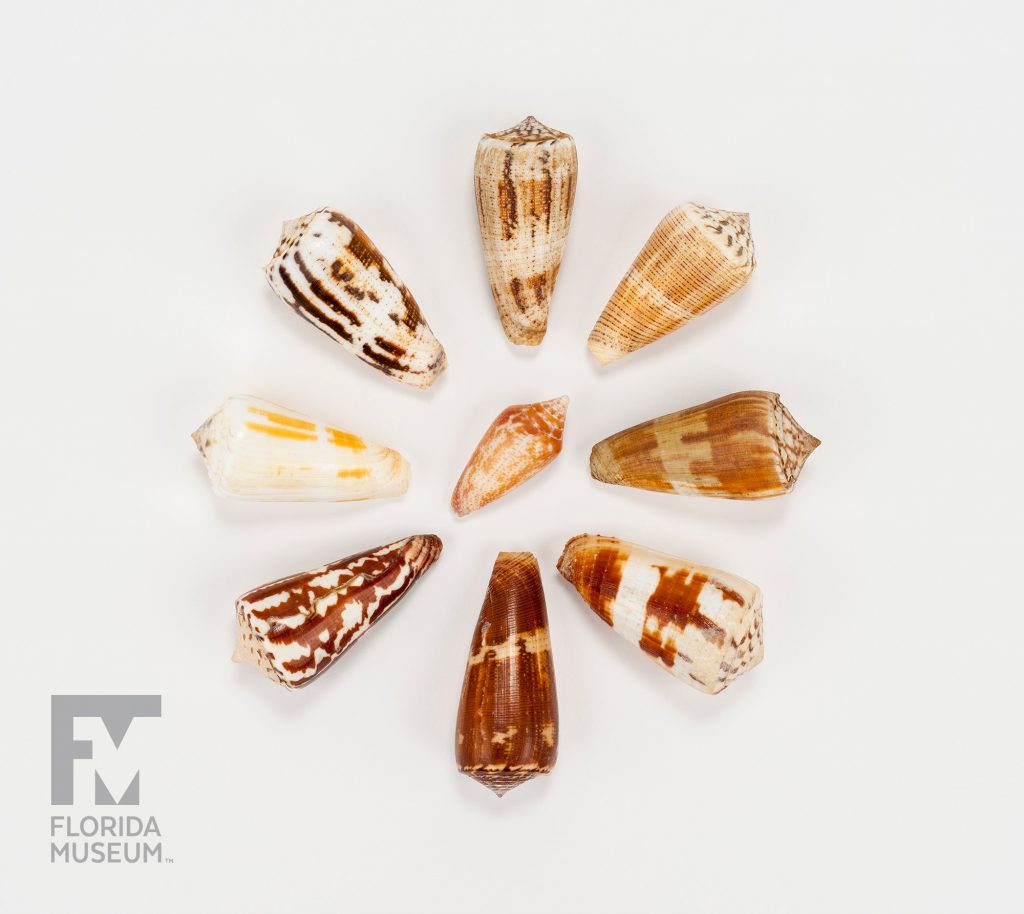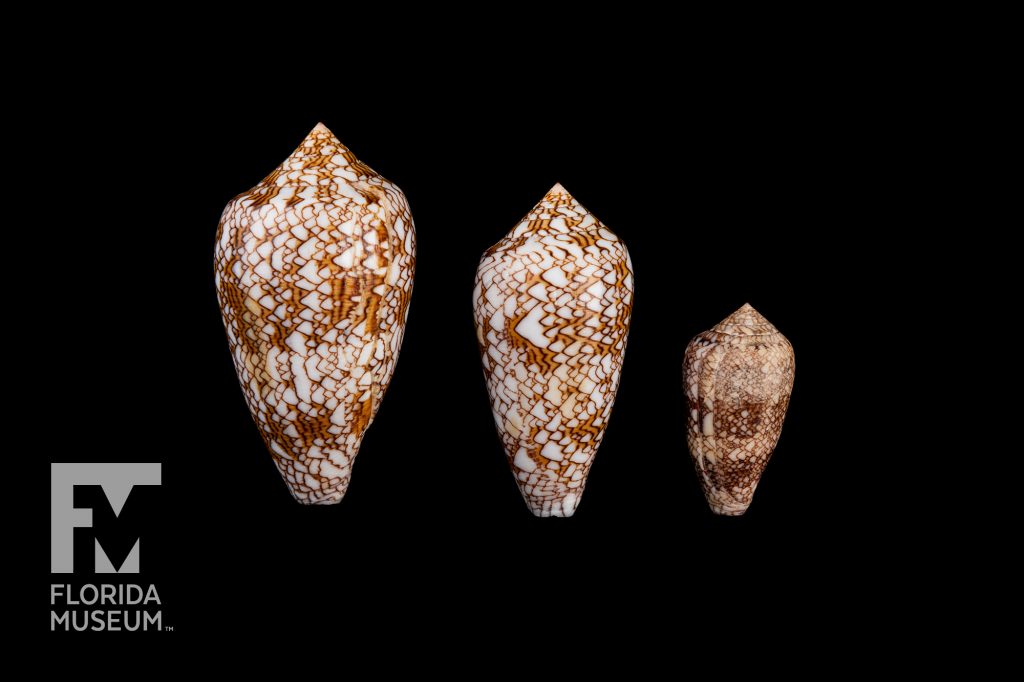These predatory sea snails subdue their prey with a hollow, venom-filled tooth. The venom interferes with nerve impulses, paralyzing prey in various ways. These toxins are now finding medical uses as pain blockers.
Summary
Cone shells (various species)
From the Indo-Pacific, mid-17th–18th centuries
Collection
Story
Most snails have many small, scraping teeth on a chitinous ribbon, much like the teeth on a file, that can be used to scrape food off of surfaces. One group of predatory snails, the Cone Snails, paralyze their prey with a single, hollow harpoon-shaped tooth filled with venom. Most Cone Snails feed on worms or other snails, but some lie in wait and harpoon and subdue unsuspecting fish.
Cone venom contains hundreds of different compounds called conotoxins that interfere with nerve impulses, causing prey to go limp or to go into rigor with continuously tensed muscles. Some conotoxins take effect quickly but do not last long, while others take effect slowly but last much longer—long enough for a slow-moving snail to swallow their prey. Combinations of conotoxins are specific to cone species, and even populations within species, and are well-honed for their prey. These compounds, each with specific effects, are being studied as pain blockers, some of which can be a hundred times as effective as morphine in relieving pain. Already several drugs have been developed and are currently used in pain therapy.
John Slapcinsky
Collection Manager, Invertebrates*
Florida Museum of Natural History
Exhibit
On display Sept. 23, 2017-Jan. 7, 2018, Rare, Beautiful & Fascinating: 100 Years @FloridaMuseum celebrated the Museum’s rich history. Each Museum collection was asked to contribute its most interesting items and share the stories that make them special. Though the physical exhibit is closed, this companion website remains online, providing an opportunity to experience the Florida Museum’s most treasured specimens.
Exhibit Area: Objects Tell Stories
Theme: Human Health
 Want to see more? Explore more than 300 breathtaking color photos of plants, animals, fossils and cultural heritage materials from the Florida Museum of Natural History’s collections in the award-winning book All Things Beautiful available from the University Press of Florida.
Want to see more? Explore more than 300 breathtaking color photos of plants, animals, fossils and cultural heritage materials from the Florida Museum of Natural History’s collections in the award-winning book All Things Beautiful available from the University Press of Florida.
*This title was accurate at the time the exhibit was on display in 2017. Please visit the collection website to verify current staff and student information.


